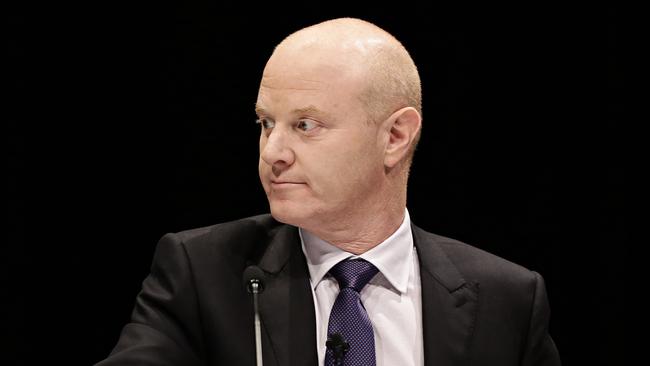Looking beyond the big banks’ headline profits

CBA, the largest of the big banks, is expected to announce a cash profit approaching $9.5 billion for the year to June. That would represent an increase of around 3.7 per cent on last financial year’s earnings of $9.14bn.
If, as is expected, CBA does produce another record result, it is inevitable that references will be made to its decision, along with its peers, to withhold some of the RBA’s rate cut from mortgage borrowers. CBA cut its standard variable rate mortgage rate by 13 basis points.
It is worth noting, however, that in the first half of the financial year, CBA’s cash earnings were up four per cent on the previous corresponding period. If it produces a full-year result in line with the analysts’ expectations, that would imply a lower rate of growth in second-half earnings relative to the same period last year and a lower profit in the second half than in the first.
That is what one might expect, given the context in which the banks are operating. With relatively weak demand for credit, a regulator-driven rationing of lending to property investors and foreign buyers and a toughening of credit standards generally, there isn’t a lot of volume growth occurring in the system.
At the same time, the ultra-low environment means the banks earn less on their substantial holding of non-interest-bearing deposits and on their shareholder capital and it also means — a development that was underscored by the banks’ response to the RBA decision — that they can’t move deposit rates down in tandem with the reductions in official rates.
The regulatory environment forces the banks, particularly the majors because of their domestic systemic importance, to hold more shareholder capital. It is also forcing them to fund themselves with a higher proportion of deposits, particularly retail deposits because of their perceived stability.
The impact of having to hold more capital, retain/attract retail deposits and borrow longer term in wholesale markets will continue to exert pressure on the banks’ net interest margins.
CBA’s net interest margin was down five basis points in the first half compared with previous December half and unchanged from the June half of last year at 2.06 per cent. The margin is expected to shrink another couple of basis points in the second half of 2015-16.
The extent of the squeeze on margins is a better guide to how the banks’ are performing than a simple headline profit number. It will provide an insight into whether the banks are absorbing the funding cost pressure or distributing it among their customers.
There’s always going to be arguments about the profitability of the major banks because their numbers are so large. They are big banks by any standards. They are, however, conservatively capitalised, have historically low levels of bad and doubtful debts (although that cycle is turning) and are by international standards efficient.
Their big franked dividend yields also means that they are particularly attractive to domestic investors, whether individual or institutional, so to the extent that they do generate large profits the majority of those earnings flow back to domestic investors.
With both the international regulatory settings and the “unquestionably strong” objective that the Australian Prudential Regulation Authority has picked up from the Financial System Inquiry requiring a lot more capital, the banks do need to attract and service their larger capital bases.
In the post-crisis settings, a larger proportion of their funding costs will be attributable to the need to attract and retain both retail deposits and shareholder capital to meet the new prudential standards being set both globally and by APRA locally.
As we’ve seen in Europe, the way low central bank rates interact with the regulatory requirements sucks the profitability from commercial banks because they still have to set deposit rates and pay dividends at levels that will at least maintain their levels of retail funding and hopefully satisfy their shareholders.
Europe’s banking system also illustrates the flip side of a banking system that is regarded as too profitable.
If the system isn’t generating profits and organic capital and paying dividends that enable it to attract external capital it is unstable and has an incentive to shrink its asset base and improve its capital ratios by lending less, which damages the real economy.
The reality that it is in all our interests that the major banks remain sound and soundly profitable will almost certainly be overlooked in the reaction to the CBA’s headline number.
While the politicians and shock jocks remain fixated with mortgage rates that are already at 40-year-plus lows, without any thought for the other constituents in the banking system, it is difficult for the banks to defend themselves and explain the complexity of the decisions they are making as they try to satisfy the aspirations of all their customers and capital-providers while complying with ever-rising regulatory hurdles.
Given the controversies of the past week and the continuing threat, given the make-up of the new Parliament, of a royal xommission into the banks, one suspects CBA’s Ian Narev will, however, at least make the attempt.






When Commonwealth Bank reports its full-year results on Wednesday the focus of the less sophisticated, given the furore over the major banks’ decision not to pass on the full 25 basis points of the reserve Bank’s latest cut to official interest rates, will inevitably be on its record nature.